Transforming a tree stump into a fire pit offers an innovative solution that combines functionality with rustic charm. This sustainable approach repurposes what would otherwise be an eyesore or expensive removal project into a stunning outdoor centerpiece. Tree stump fire pits provide natural warmth for gatherings while gradually eliminating the stump through controlled burning. These unique installations blend seamlessly with natural landscapes, creating authentic outdoor spaces that celebrate organic materials. From simple hollowed designs to elaborate metal-lined installations, tree stump fire pits accommodate various skill levels and aesthetic preferences, making them accessible for both DIY enthusiasts and professional landscapers seeking distinctive outdoor features.
1. Classic Hollowed Tree Stump Fire Pit
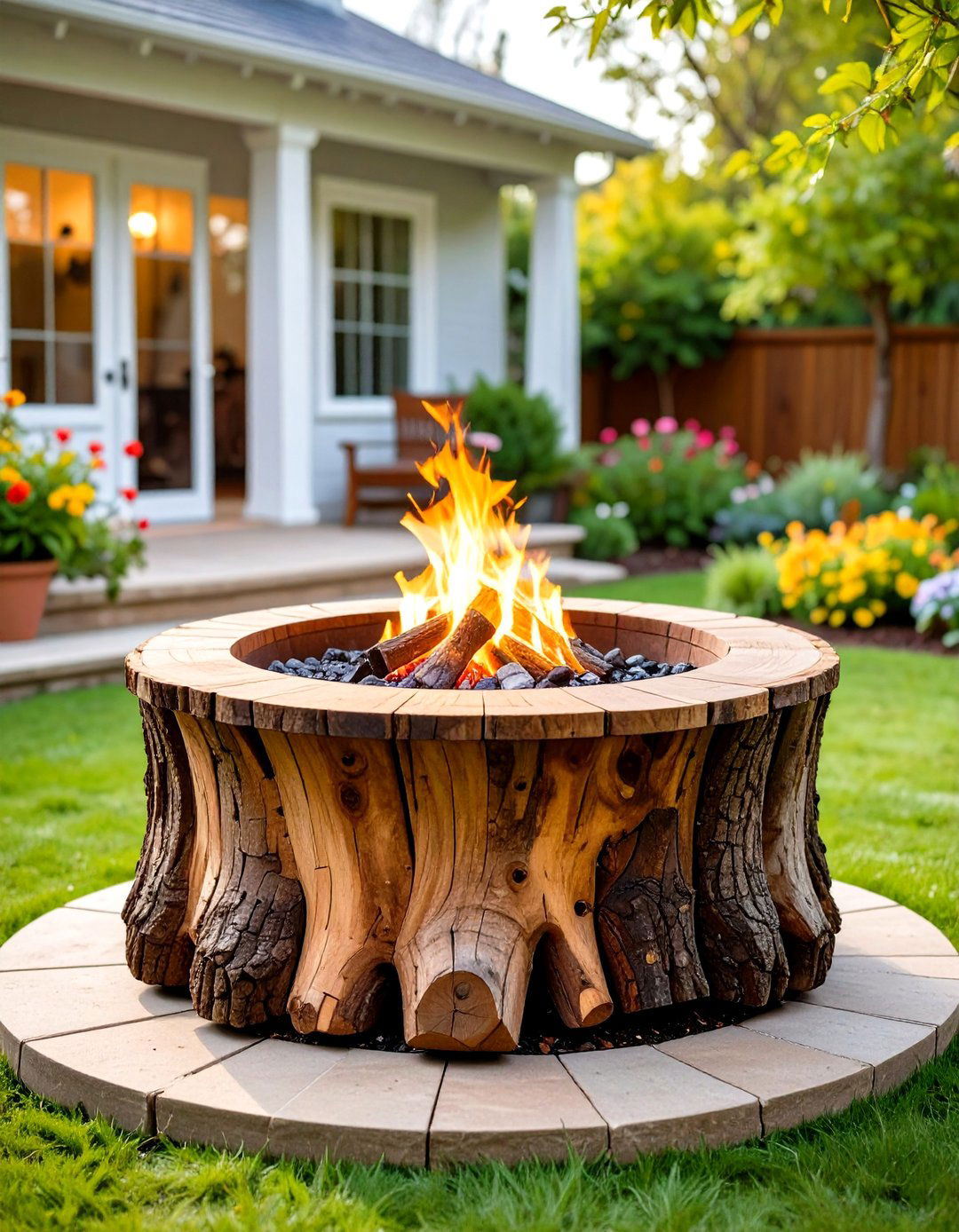
A traditional hollowed design represents the most straightforward approach to creating a tree stump fire pit. This method involves carefully carving out the center of a freshly cut stump, leaving thick walls for structural integrity and safety. The natural wood acts as both fuel and container, gradually consuming itself while providing warmth and ambiance. To enhance safety, many homeowners add a metal fire ring insert that protects the surrounding wood from excessive heat damage. The organic shape and bark texture create an authentic woodland atmosphere that complements natural garden settings. This design works exceptionally well with hardwood stumps like oak or maple, which burn slowly and provide lasting heat for extended outdoor gatherings.
2. Metal-Lined Tree Stump Fire Pit
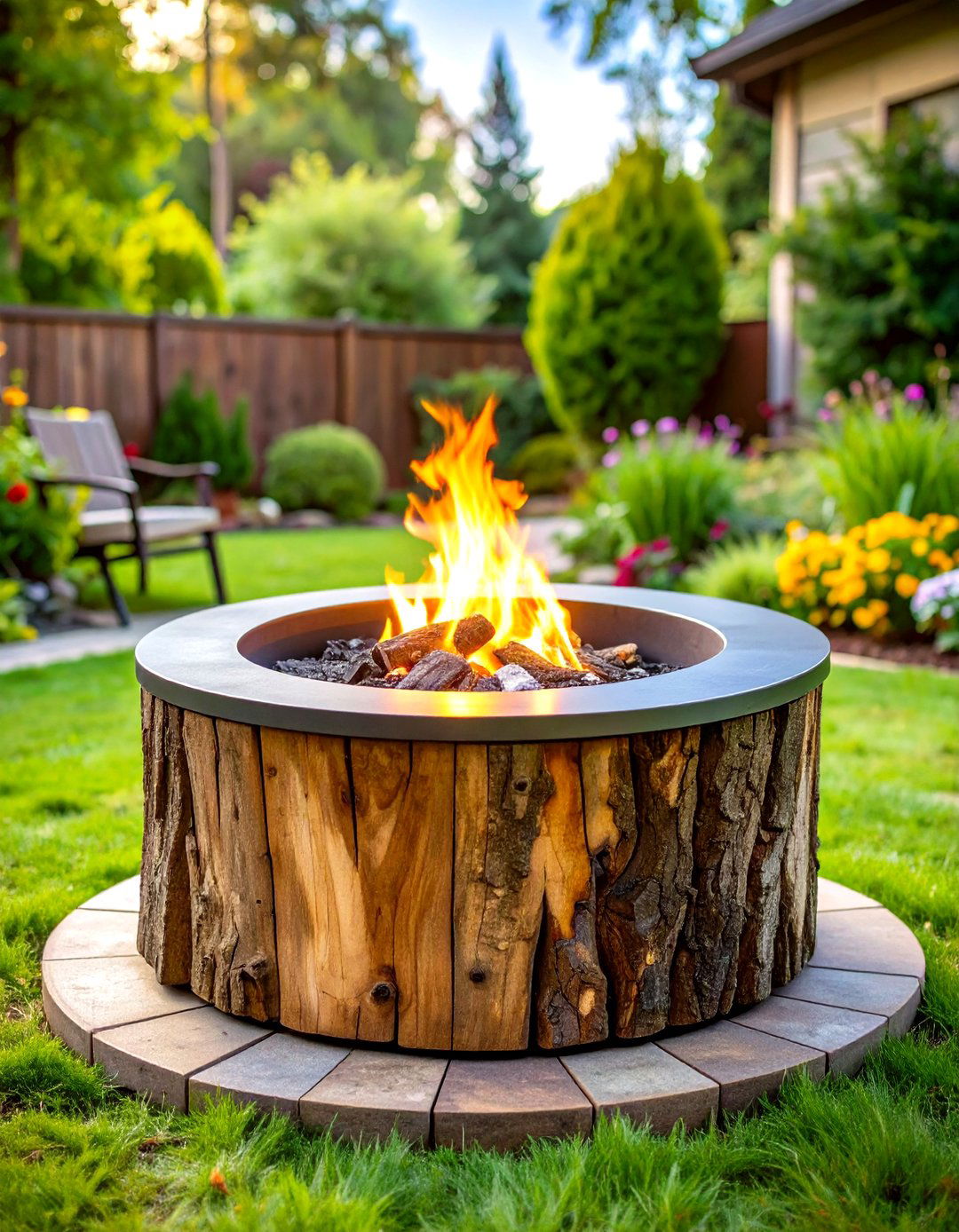
For enhanced durability and safety, a metal-lined tree stump fire pit incorporates stainless steel inserts that protect the wood structure while maintaining the natural aesthetic. The liner prevents the stump from burning too quickly and provides consistent heat distribution throughout the burning surface. This approach typically uses 11-gauge stainless steel rings that resist corrosion and withstand high temperatures without warping. The metal barrier also prevents root system ignition, addressing common safety concerns associated with burning stumps. Installation involves hollowing the stump to accommodate the liner, ensuring proper ventilation gaps around the edges. This sophisticated design extends the life of the fire pit while preserving the rustic appearance that makes tree stump installations so appealing.
3. Elevated Tree Stump Fire Pit with Stone Base
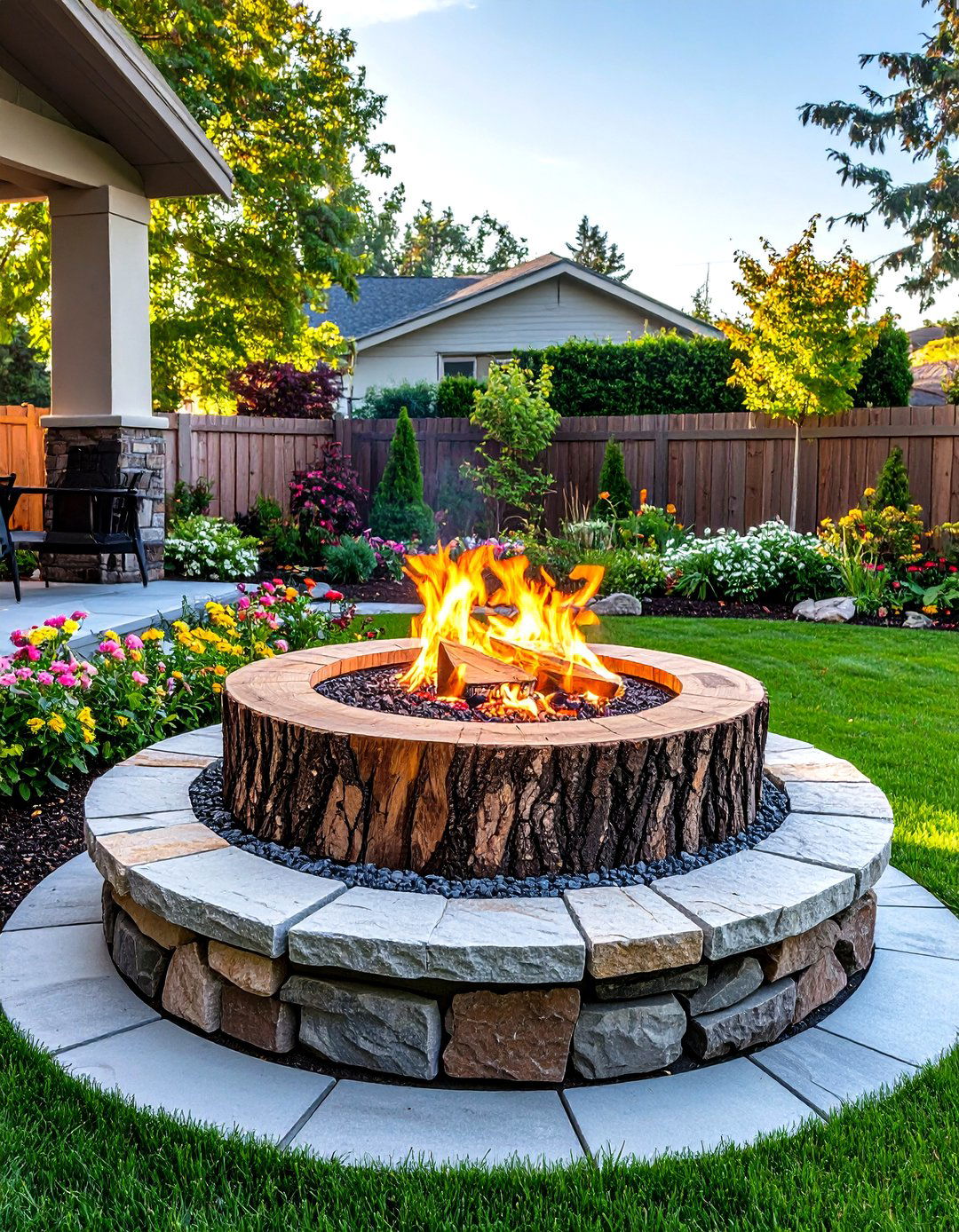
Creating an elevated tree stump fire pit involves mounting the prepared stump on a stone or concrete base, improving drainage and preventing ground contact that could lead to moisture damage. This design elevates the burning chamber above ground level, enhancing air circulation and creating more efficient combustion. The stone foundation can incorporate decorative elements like flagstone, fieldstone, or manufactured pavers that complement the natural wood texture. Proper elevation also facilitates ash removal and maintenance while protecting surrounding vegetation from heat damage. The raised design creates visual interest and makes the fire pit more accessible for loading wood and tending flames. This approach works particularly well in formal garden settings where the structured base provides balance between natural and designed elements.
4. Tree Stump Fire Pit with Surrounding Seating Stumps
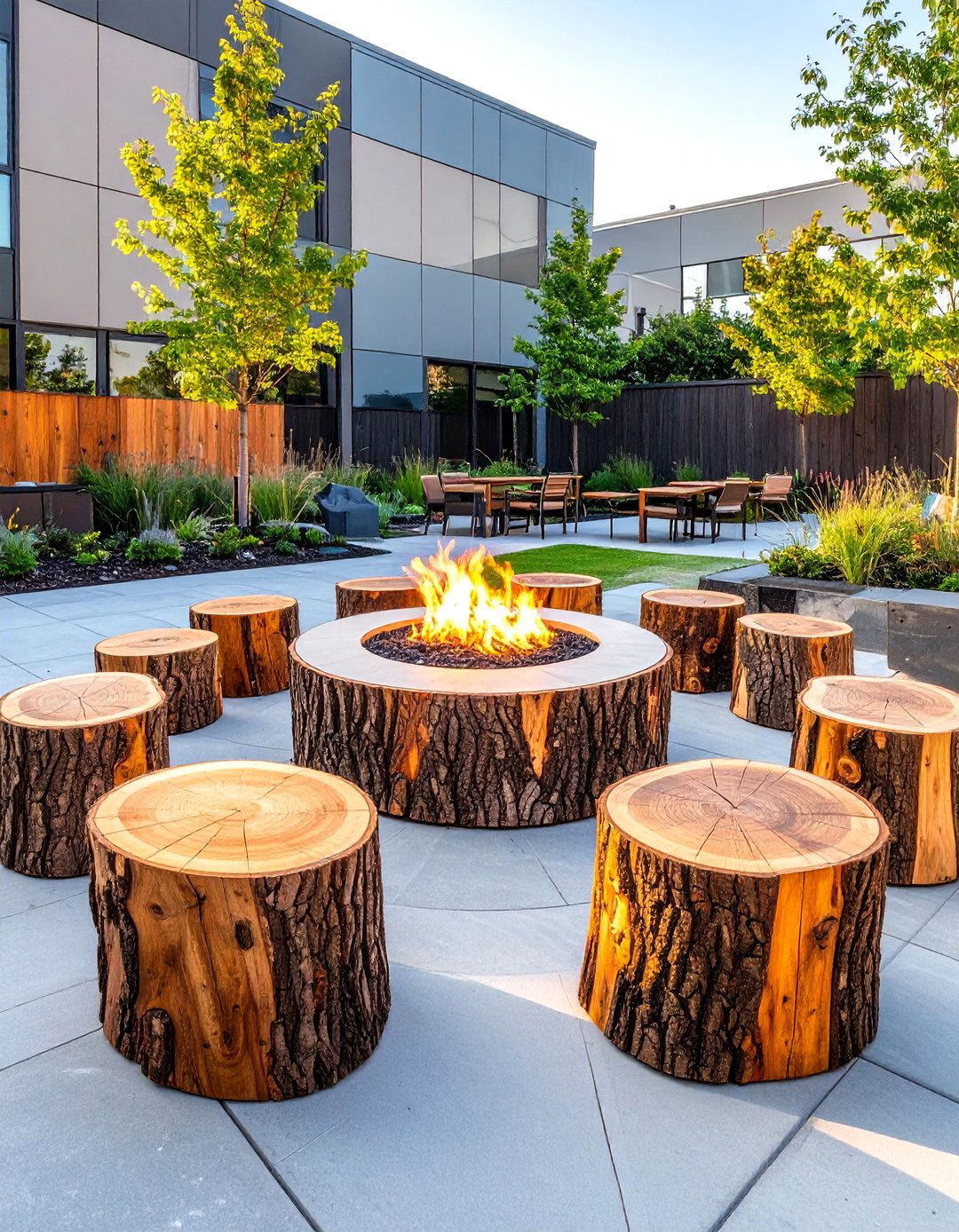
An integrated seating design transforms multiple tree stumps into a complete outdoor entertainment area centered around the main fire pit stump. This cohesive approach uses matching wood species and similar heights to create natural bench seating arranged in a circle around the central fire feature. The surrounding seating stumps should be treated with weather-resistant sealers to prevent rot and maintain their structural integrity over time. Comfortable spacing allows for safe distances from the fire while encouraging conversation and community gathering. Additional features might include small side table stumps for drinks and snacks, creating a fully functional outdoor living space. This comprehensive design maximizes the utility of tree removal projects while creating an inviting space for family gatherings and entertaining friends.
5. Artistic Carved Tree Stump Fire Pit
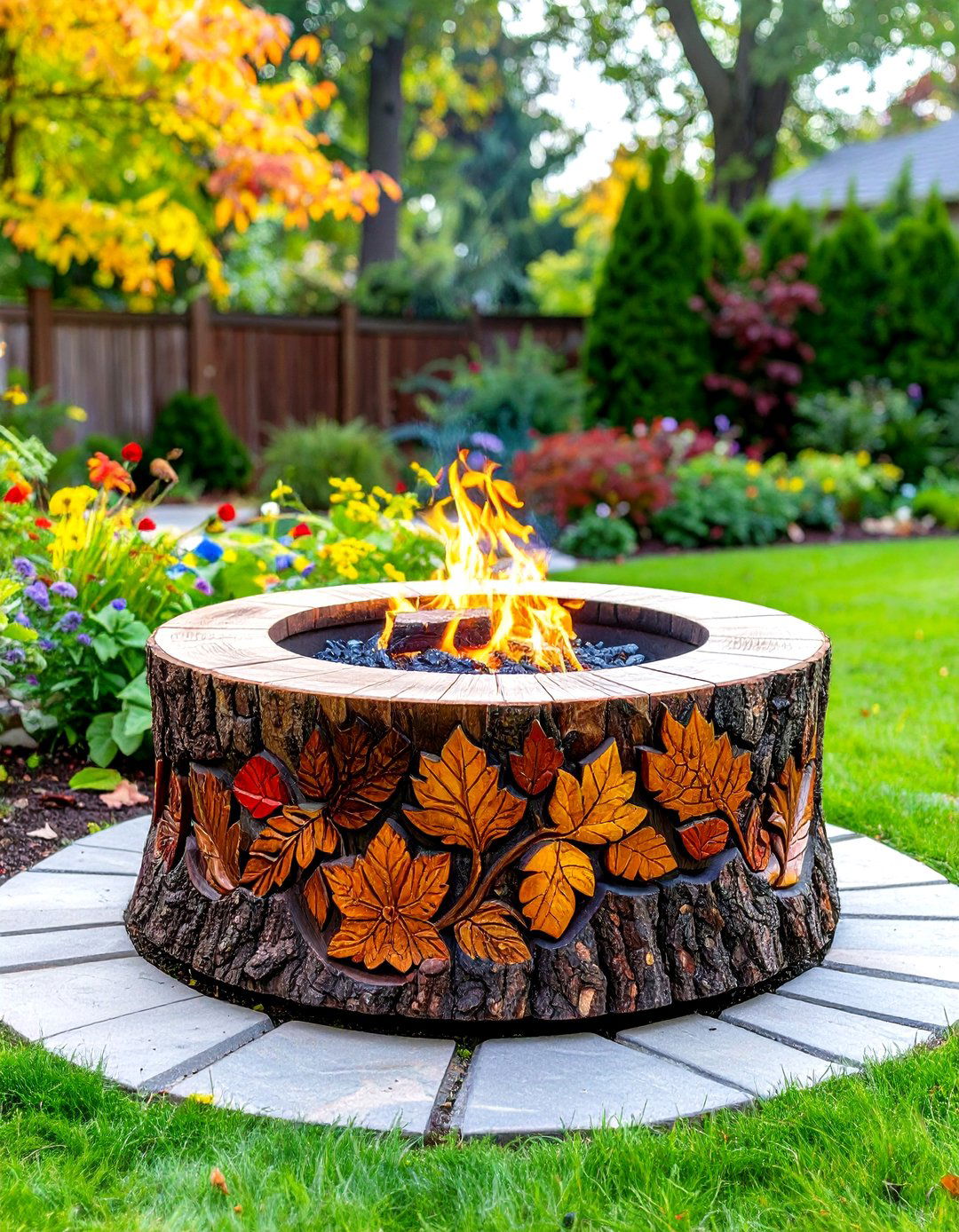
Transforming a tree stump fire pit into artistic sculpture combines functional heating with decorative garden art through intricate carving and design work. Skilled artisans can create elaborate patterns, wildlife motifs, or geometric designs that reflect personal style while maintaining the fire pit's primary function. The carving process should preserve structural integrity around the fire chamber while adding visual interest to the exterior surfaces. Popular motifs include leaf patterns, tribal designs, or nature-themed elements that enhance the organic character of the wood. Protective finishes help preserve the carved details while resisting weather damage and maintaining the artistic elements. This sophisticated approach creates a unique focal point that serves as both functional fire feature and conversation-starting garden sculpture.
6. Multi-Level Tree Stump Fire Pit Complex
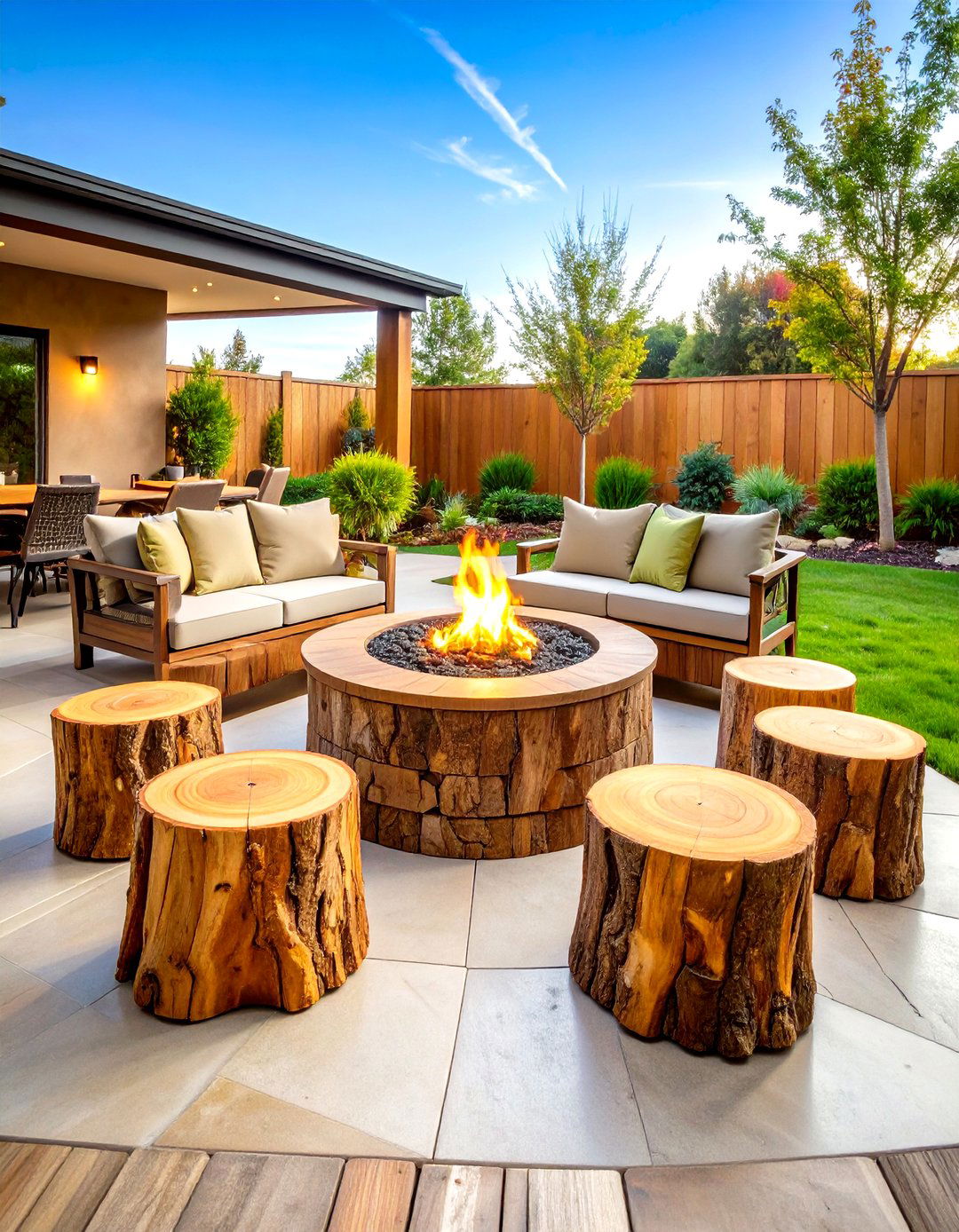
A multi-level design creates visual drama by incorporating stumps of varying heights arranged around a central fire pit stump, establishing different functional zones within the outdoor space. This terraced approach might include tall stumps for bar-height seating, medium stumps for standard seating, and low stumps for footrests or side tables. The varying elevations create natural sight lines and accommodate users of different heights while maintaining comfortable conversation distances. Strategic placement considers wind patterns and smoke direction to ensure all seating positions remain comfortable during use. The stepped arrangement also provides opportunities for creative lighting integration, with solar lights or LED strips highlighting the different levels. This dynamic design transforms simple tree removal into an architectural outdoor feature that maximizes both function and visual appeal.
7. Tree Stump Fire Pit with Mosaic Decoration
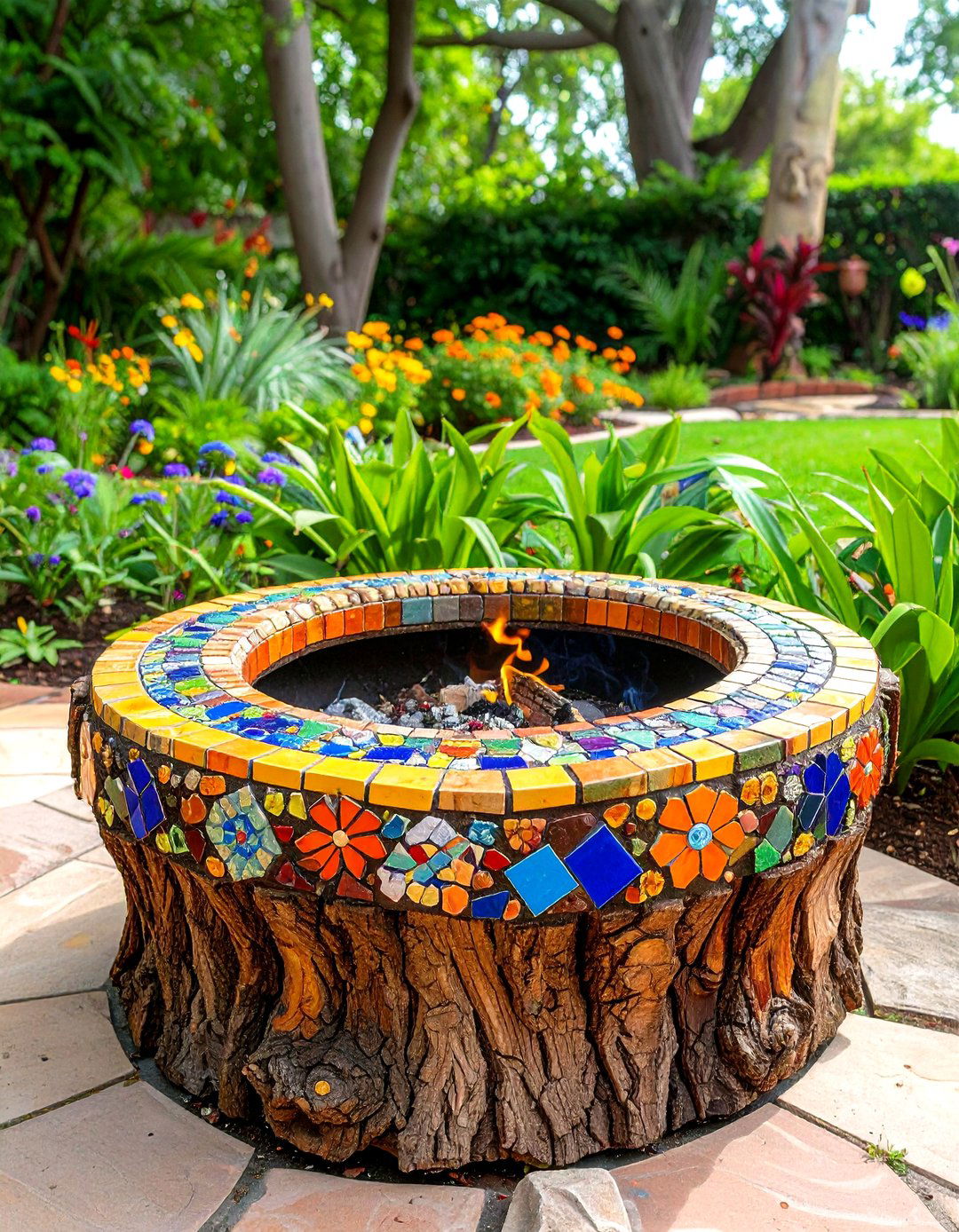
Incorporating mosaic elements transforms a basic tree stump fire pit into a colorful artistic centerpiece that reflects personal style and complements garden color schemes. The mosaic application typically covers the exterior bark surface with ceramic tiles, glass pieces, or stone fragments arranged in patterns or abstract designs. Proper adhesive and grout selection ensures the decorative elements withstand temperature fluctuations and weather exposure. Popular color schemes include earth tones that complement the natural wood, or vibrant hues that create striking contrast against the organic backdrop. The mosaic work should avoid the fire chamber area but can extend around the entire exterior circumference for complete coverage. This artistic approach creates a unique focal point that combines the warmth of natural wood with the visual excitement of decorative artistry.
8. Swedish Torch Tree Stump Fire Pit

Inspired by traditional Scandinavian techniques, the Swedish torch tree stump fire pit features vertical cuts that create controlled burning channels while maintaining the stump's structural integrity. This method involves making strategic cuts from the top down, leaving the base intact to serve as a natural burning platform. The vertical channels allow for excellent air circulation, creating efficient combustion that burns cleanly with minimal smoke production. This design works exceptionally well with softwood stumps like pine or spruce, which ignite easily and burn with attractive flame patterns. The torch effect creates dramatic vertical flames that provide both heat and spectacular visual appeal. Proper cutting technique ensures safe operation while maximizing the burning efficiency and creating an impressive outdoor fire feature that captures attention.
9. Tree Stump Fire Pit with Water Feature Integration
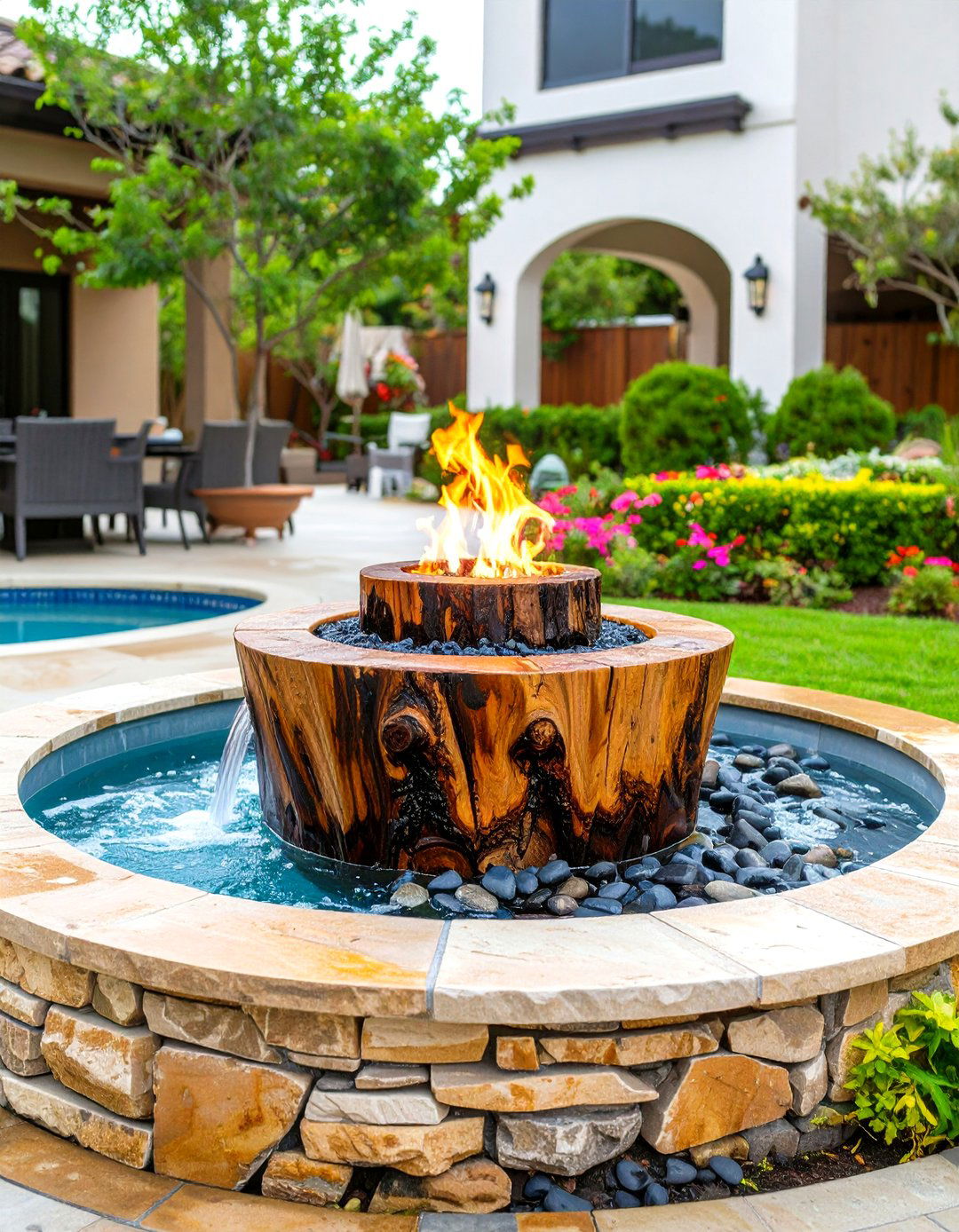
Combining fire and water elements creates a sophisticated tree stump fire pit design that incorporates fountains, cascades, or reflecting pools around the central burning chamber. This integration requires careful planning to ensure safe distances between water features and the fire pit while creating harmonious visual flow. The water elements might include stone channels that direct water around the fire pit base, or fountain features that operate independently of the fire function. Proper electrical and plumbing installation ensures safe operation of both systems without interference. The combination of dancing flames and flowing water creates mesmerizing ambiance that enhances meditation and relaxation. This premium design approach creates resort-style outdoor environments that provide year-round enjoyment through multiple sensory elements.
10. Tree Stump Fire Pit with Built-in Storage
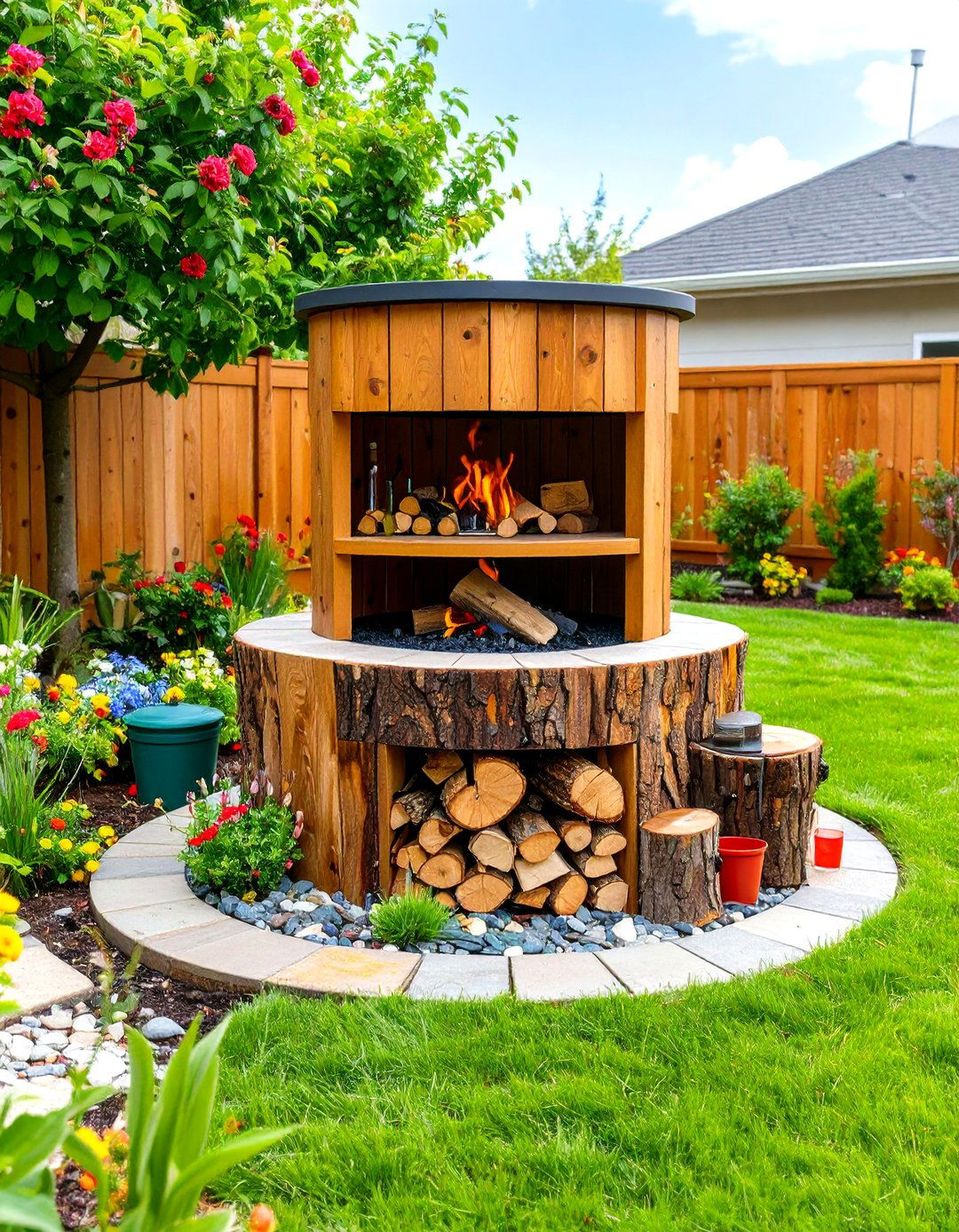
Practical storage solutions transform tree stump fire pits into fully functional outdoor heating systems by incorporating dedicated spaces for firewood, tools, and accessories. This design typically includes hollow sections within larger stumps or attached storage compartments built from matching wood materials. The storage areas should feature weather-resistant construction with proper ventilation to keep firewood dry and accessible. Tool storage might include dedicated hangers for fire-tending implements, while accessory storage accommodates items like fire-starting materials and safety equipment. Strategic placement ensures easy access during fire tending while maintaining the natural aesthetic of the wood construction. This comprehensive approach reduces clutter around the fire pit while ensuring all necessary materials remain organized and readily available for safe operation.
11. Concrete-Encased Tree Stump Fire Pit
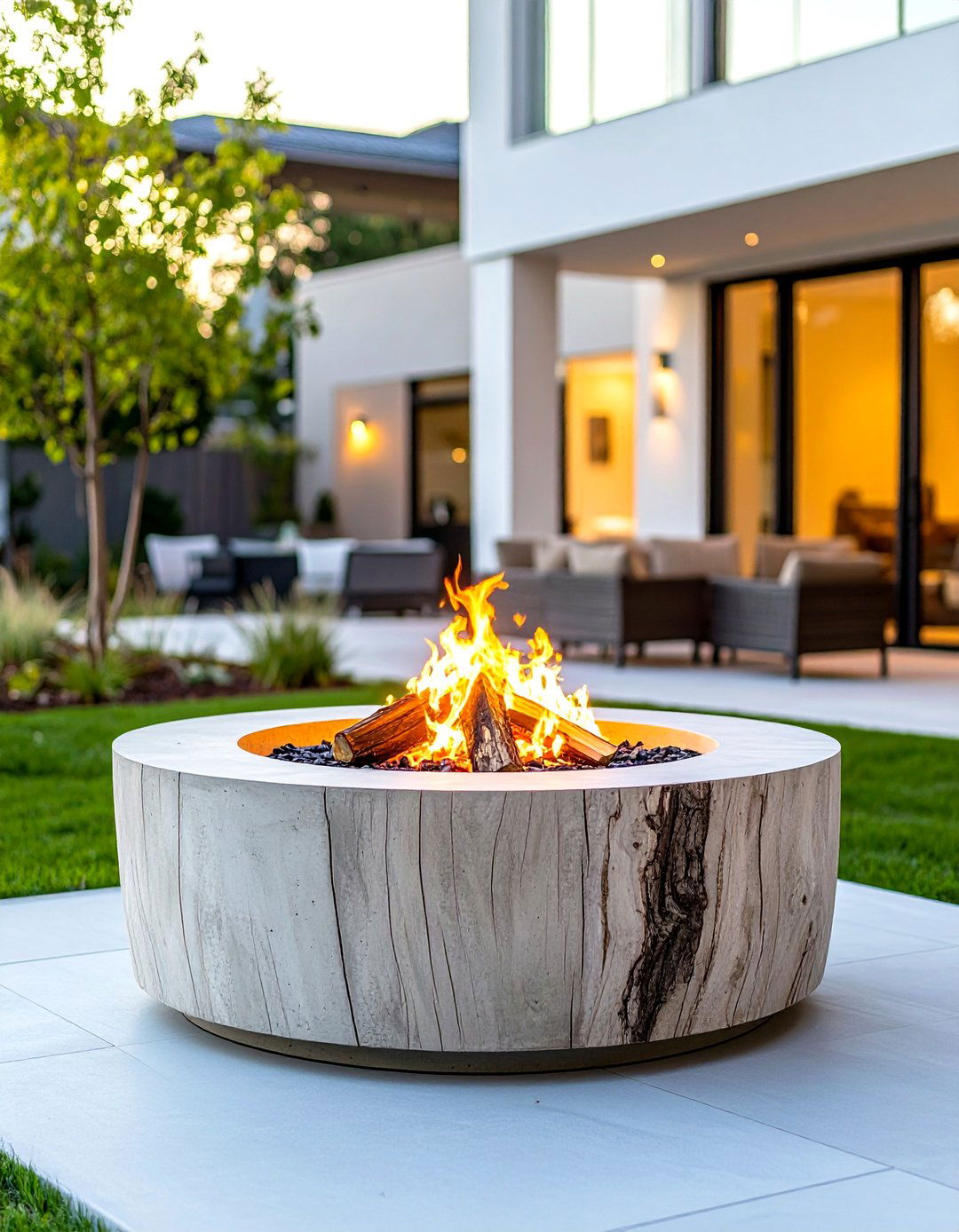
A concrete-encased design provides maximum durability by surrounding the tree stump with fire-resistant concrete while preserving the natural wood burning chamber. This hybrid approach combines the efficiency of concrete heat retention with the authentic experience of burning real wood. The concrete shell protects the stump from weather damage while providing a stable, permanent base that won't shift or settle over time. Decorative concrete techniques can create textured surfaces that complement the natural wood, or smooth finishes for modern aesthetic appeal. Proper reinforcement and expansion joints prevent cracking from temperature cycles, ensuring long-term structural integrity. The concrete encasement also provides opportunities for integrated seating ledges or decorative elements that enhance both function and appearance while maintaining the natural burning experience.
12. Tree Stump Fire Pit with Cooking Grate System
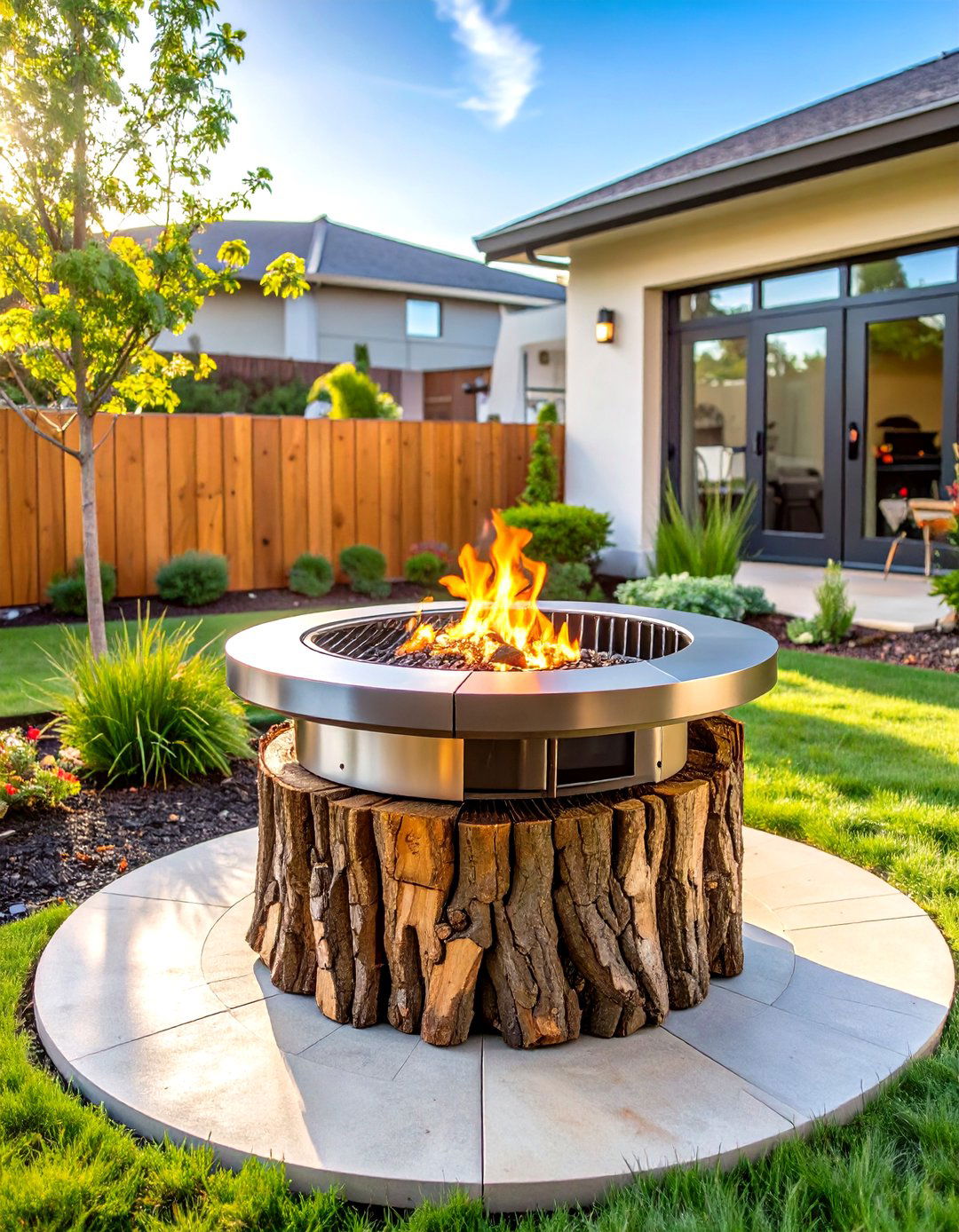
Culinary-focused designs incorporate adjustable cooking grates that transform tree stump fire pits into outdoor cooking centers for grilling, roasting, and campfire cooking. The grate system typically features height-adjustable mechanisms that allow precise heat control for different cooking techniques. Heavy-duty stainless steel construction resists warping and corrosion while providing even heat distribution across the cooking surface. The system might include specialized accessories like rotisserie attachments, Dutch oven hangers, or warming racks that expand cooking possibilities. Proper grate design ensures stable support for cookware while allowing easy access for fire tending and fuel addition. This functional approach transforms simple outdoor heating into complete cooking capability that enhances camping-style outdoor dining experiences and expands entertainment possibilities.
13. Tree Stump Fire Pit with Lighting Integration
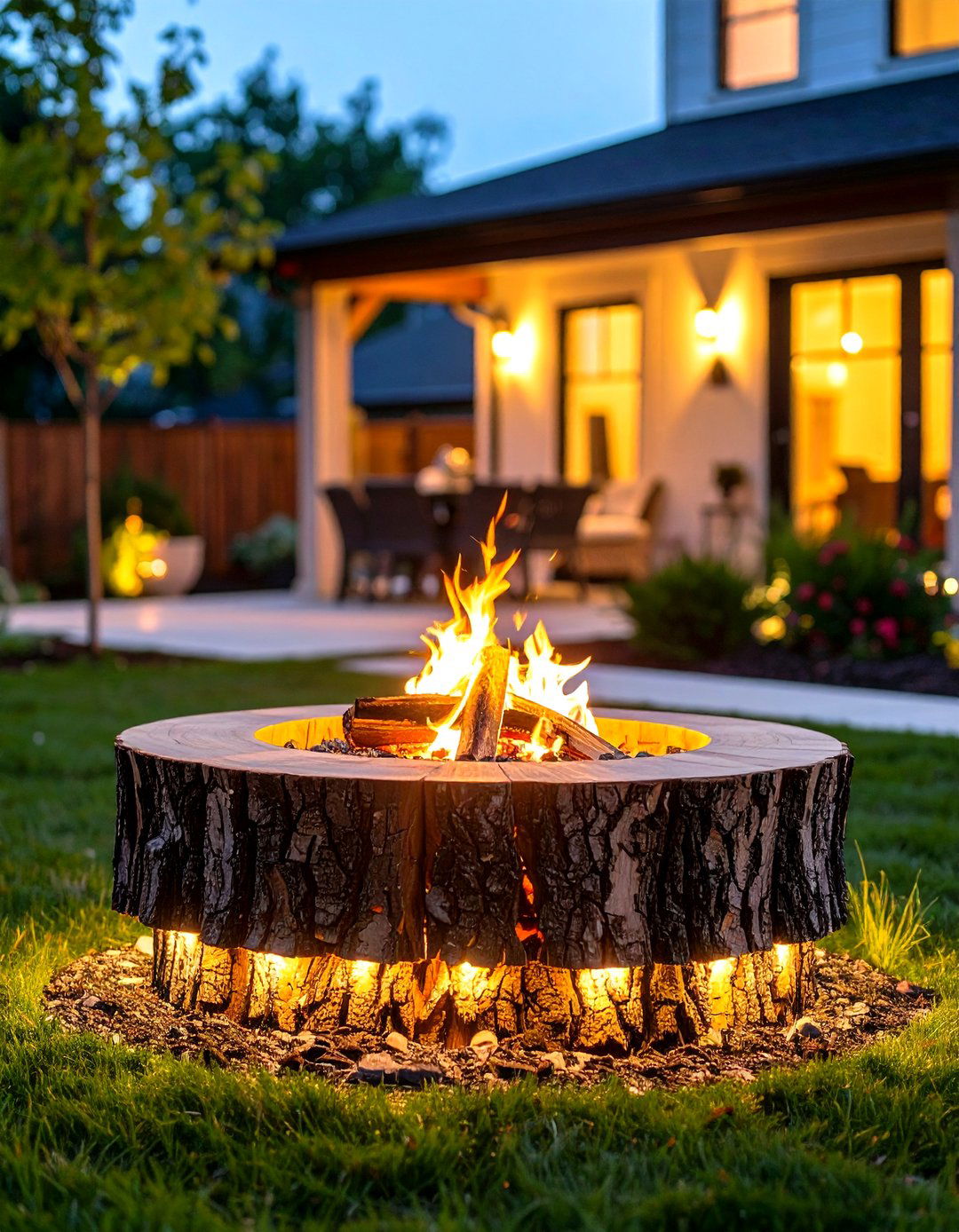
Sophisticated lighting integration creates dramatic nighttime ambiance by incorporating LED strips, solar lights, or accent lighting around tree stump fire pits. The lighting design should complement rather than compete with the natural fire glow, using warm color temperatures that enhance the wood textures and surrounding landscape. Strategic placement might include uplighting that highlights the stump's bark texture, pathway lighting for safety, or accent lights that illuminate surrounding seating areas. Solar-powered options provide eco-friendly operation without electrical installation requirements, while low-voltage LED systems offer precise control and energy efficiency. The lighting plan should consider seasonal changes and varying usage patterns to provide appropriate illumination throughout the year. This enhanced approach extends usability into evening hours while creating magical outdoor environments.
14. Tree Stump Fire Pit with Wind Protection
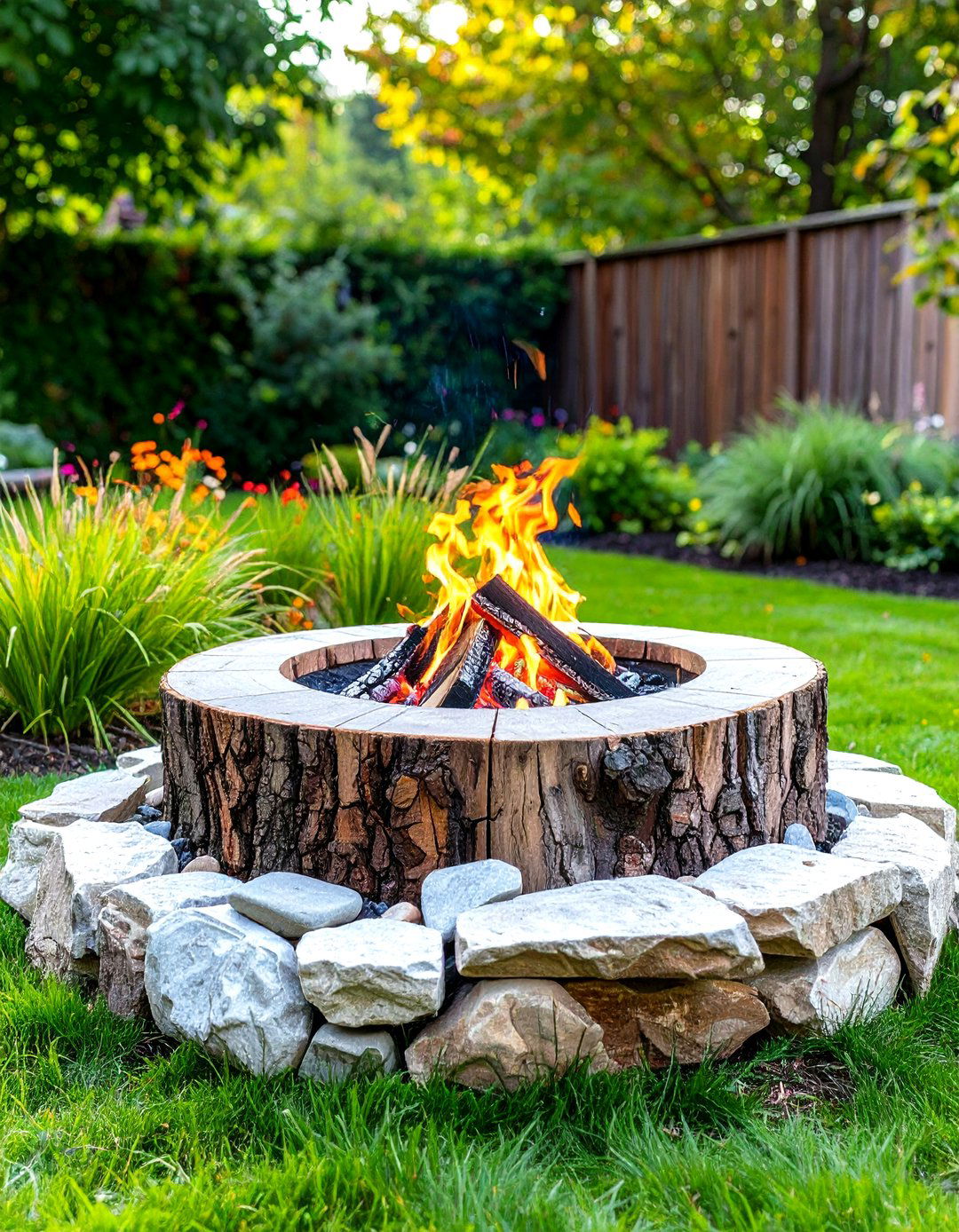
Windscreen integration addresses common challenges with outdoor fires by incorporating natural or manufactured barriers that protect flames from gusty conditions while maintaining proper ventilation. This design might include strategically placed larger stumps, stone walls, or lattice screens that deflect wind without completely enclosing the fire area. Natural windbreaks using shrubs or ornamental grasses provide living barriers that grow more effective over time while enhancing the landscape design. The protection system should consider prevailing wind directions and seasonal variations to provide effective shielding throughout the year. Proper design maintains adequate air circulation for combustion while reducing smoke problems that can make outdoor gatherings uncomfortable. This thoughtful approach ensures reliable fire performance regardless of weather conditions.
15. Tree Stump Fire Pit with Ash Management System
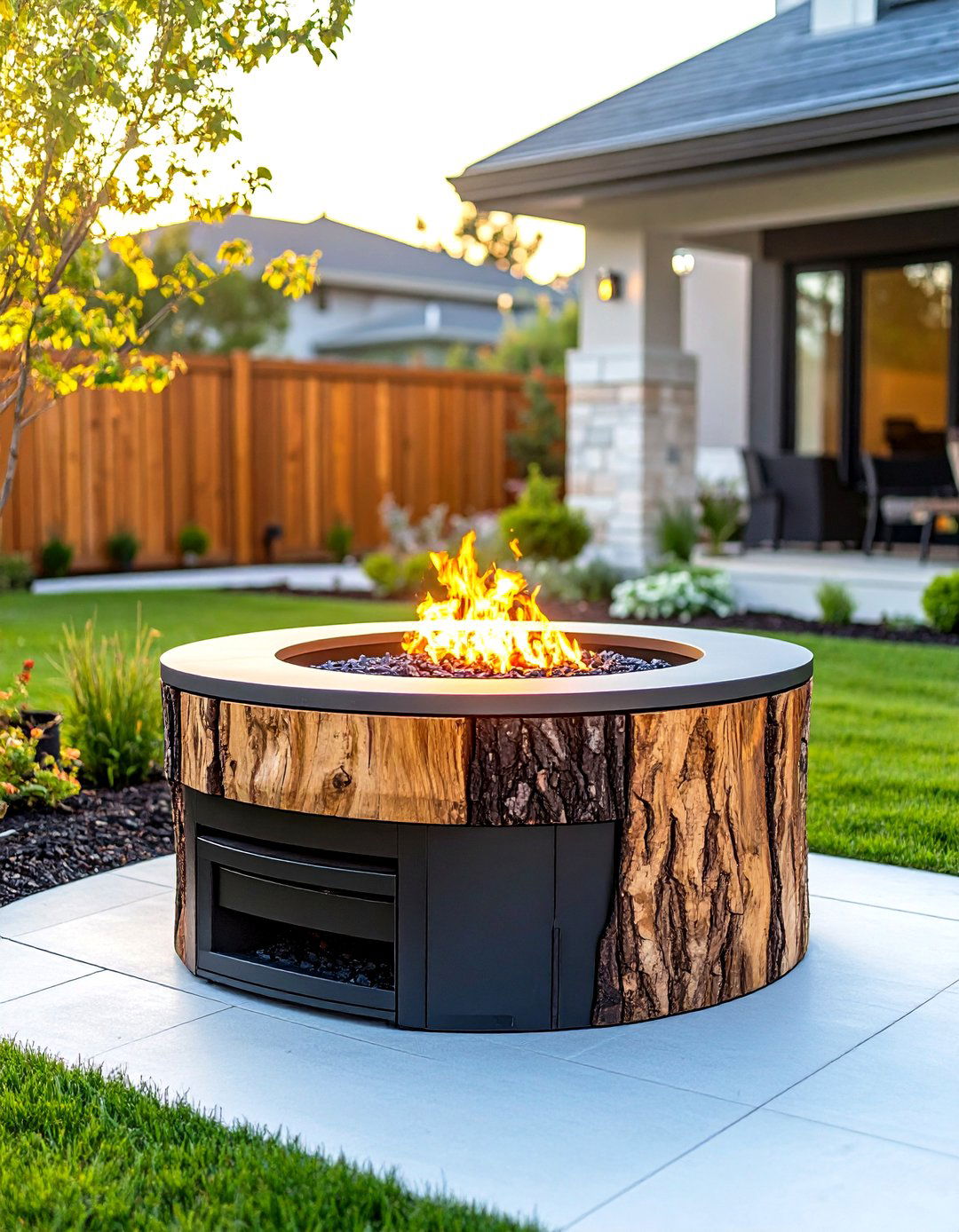
Efficient ash management transforms tree stump fire pits into low-maintenance outdoor features through integrated collection and removal systems. This design incorporates removable ash pans, slide-out drawers, or designated collection areas that simplify cleanup and maintenance. The system should provide easy access for ash removal while protecting surrounding areas from dust and debris. Proper sizing ensures adequate capacity for typical burning sessions while maintaining convenient handling for disposal. The ash management approach might include screening systems that separate partially burned materials from fine ash, allowing for efficient recycling of usable wood pieces. Weather protection prevents ash from becoming muddy or being scattered by wind, maintaining clean operation throughout all seasons.
16. Tree Stump Fire Pit with Spark Containment
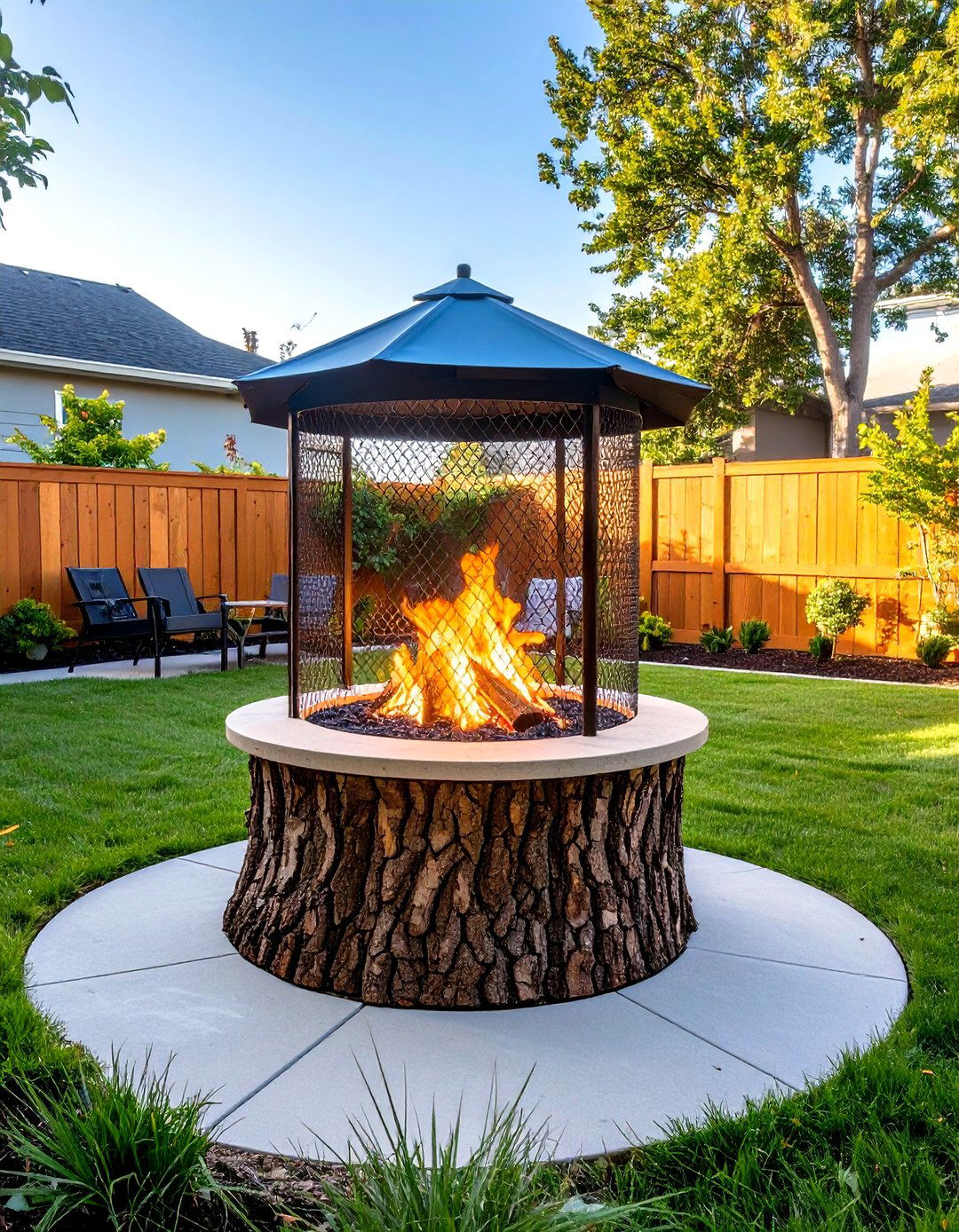
Advanced spark containment systems enhance safety and expand placement options for tree stump fire pits through specialized screens, caps, and deflector systems. This approach typically includes custom-fitted mesh screens that contain sparks while allowing heat and light transmission. The containment system should feature heat-resistant materials like stainless steel mesh or tempered glass panels that withstand high temperatures without degrading. Removable designs facilitate easy fire tending and fuel addition while providing protection during active burning. The system might include hinged access panels or sliding sections that maintain convenience while ensuring safety. This comprehensive approach allows tree stump fire pits to be placed closer to structures or vegetation while maintaining safe operation standards.
17. Tree Stump Fire Pit with Seasonal Conversion

Adaptable designs allow tree stump fire pits to serve multiple functions throughout the year by incorporating conversion systems for different seasonal uses. During non-burning seasons, the fire pit might transform into planters, water features, or decorative displays through removable inserts and accessories. The conversion system should feature weather-resistant components that store easily and install quickly for seasonal transitions. Popular alternatives include succulent gardens for summer display, holiday decorations for winter months, or water bowl features for hot weather. The base design must accommodate these various functions while maintaining the structural integrity needed for safe fire operation. This versatile approach maximizes the investment value while ensuring the feature remains attractive and functional throughout all seasons.
18. Tree Stump Fire Pit with Natural Stone Integration
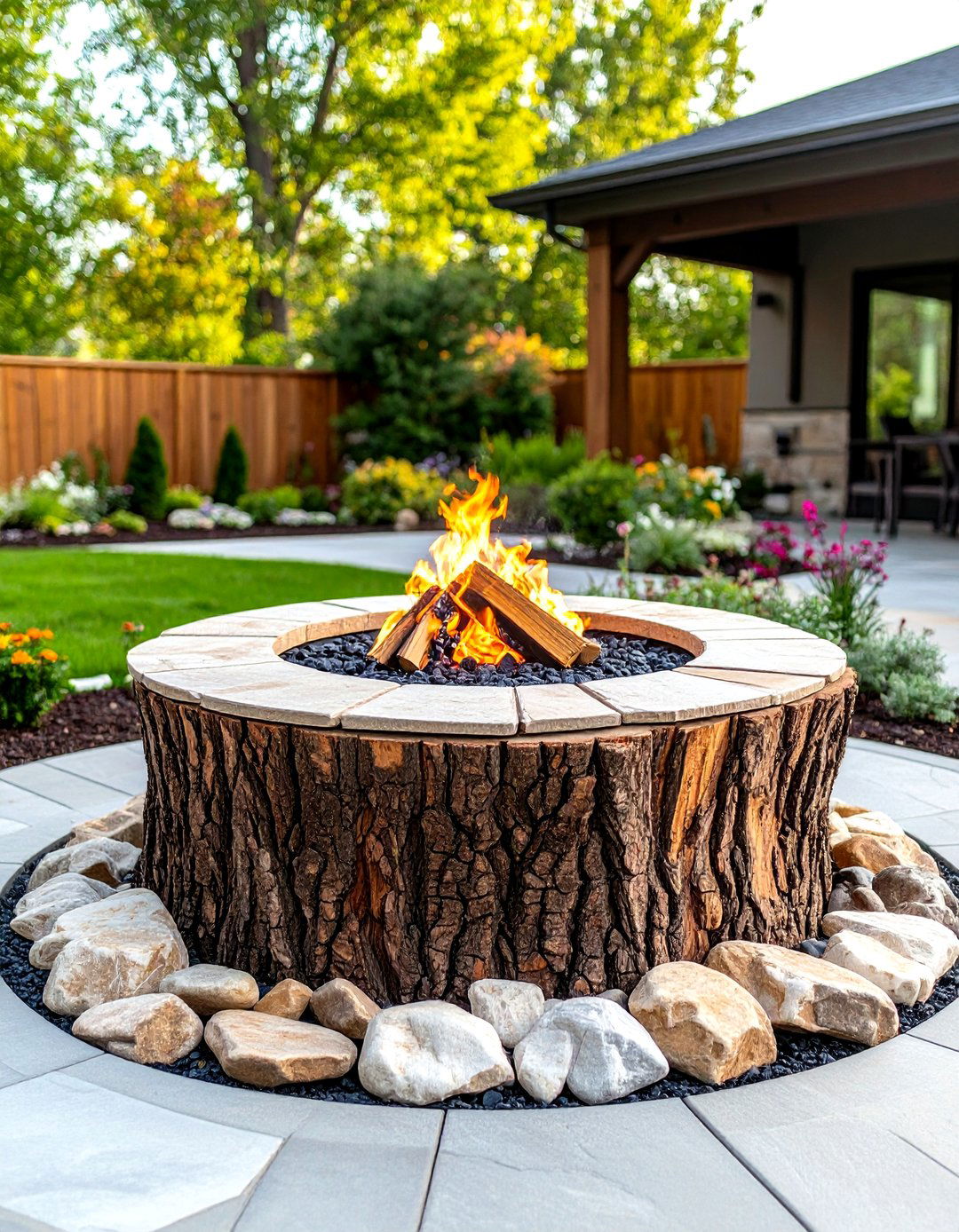
Combining tree stumps with natural stone creates sophisticated fire pit designs that blend organic materials for enhanced durability and visual appeal. This integration might include stone surrounds that provide heat reflection, decorative stone inlays that accent the wood grain, or complete stone bases that elevate and protect the stump. The stone selection should complement the wood species and surrounding landscape while providing functional benefits like heat retention and weather protection. Proper installation techniques ensure stable connections between materials while allowing for natural expansion and contraction. The combination creates striking textural contrast while maintaining the rustic character that makes tree stump installations so appealing. This premium approach delivers professional results that enhance property values.
19. Tree Stump Fire Pit with Eco-Friendly Features

Environmentally conscious designs incorporate sustainable practices and eco-friendly materials that minimize environmental impact while maintaining full functionality. This approach might include rainwater collection systems, biochar production capabilities, or carbon offset plantings around the fire pit area. The design emphasizes local materials, minimal processing, and natural finishing techniques that reduce the environmental footprint. Efficient combustion systems maximize heat output while minimizing smoke and particulate emissions. The eco-friendly approach might include educational elements that demonstrate sustainable practices or native plant integration that supports local ecosystems. This responsible design philosophy creates outdoor features that align with environmental values while providing exceptional outdoor experiences that connect users with natural processes.
20. Tree Stump Fire Pit with Smart Technology
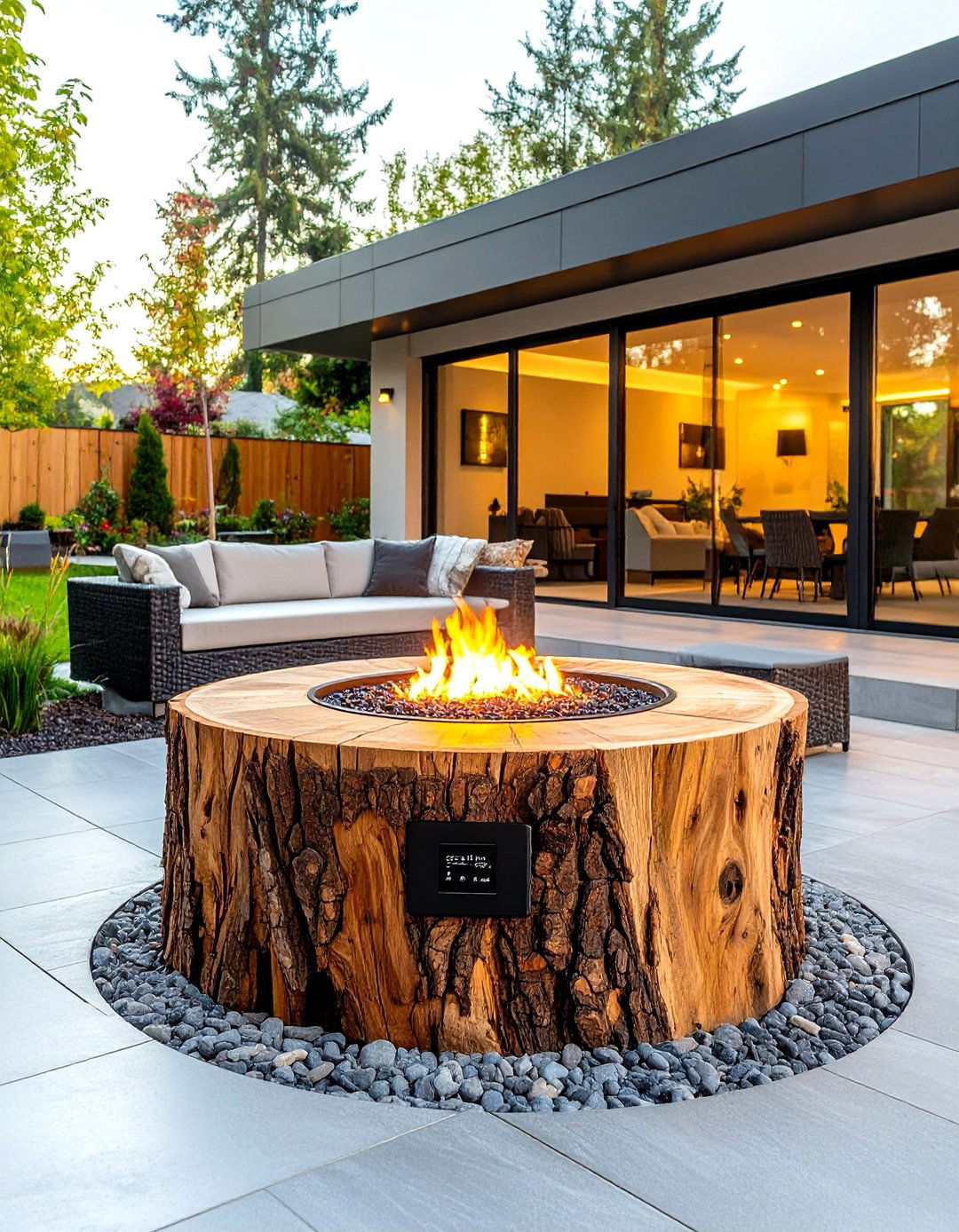
Modern technology integration brings contemporary convenience to traditional tree stump fire pits through automated ignition, temperature monitoring, and remote control systems. This sophisticated approach might include smartphone apps that control ignition timing, temperature sensors that monitor combustion efficiency, or automated fuel feeding systems that maintain consistent heat output. Safety features could include automatic shutoff systems, smoke detection, or emergency response capabilities that enhance operational security. The technology integration should complement rather than overwhelm the natural aesthetic, using discreet installations that preserve the rustic character. Weather-resistant components ensure reliable operation throughout all seasons while providing modern convenience and enhanced safety features that make outdoor entertaining effortless and enjoyable.
Conclusion:
Tree stump fire pits represent the perfect fusion of sustainability, functionality, and natural beauty in outdoor design. These versatile installations transform waste materials into stunning focal points that provide warmth, ambiance, and gathering spaces for years of enjoyment. From simple hollowed designs to sophisticated multi-feature installations, tree stump fire pits accommodate every skill level and aesthetic preference. The integration of safety features, modern conveniences, and artistic elements ensures these natural fire features meet contemporary standards while maintaining their authentic charm. Whether created as weekend projects or professional installations, tree stump fire pits deliver exceptional value through their unique combination of practicality and rustic elegance.


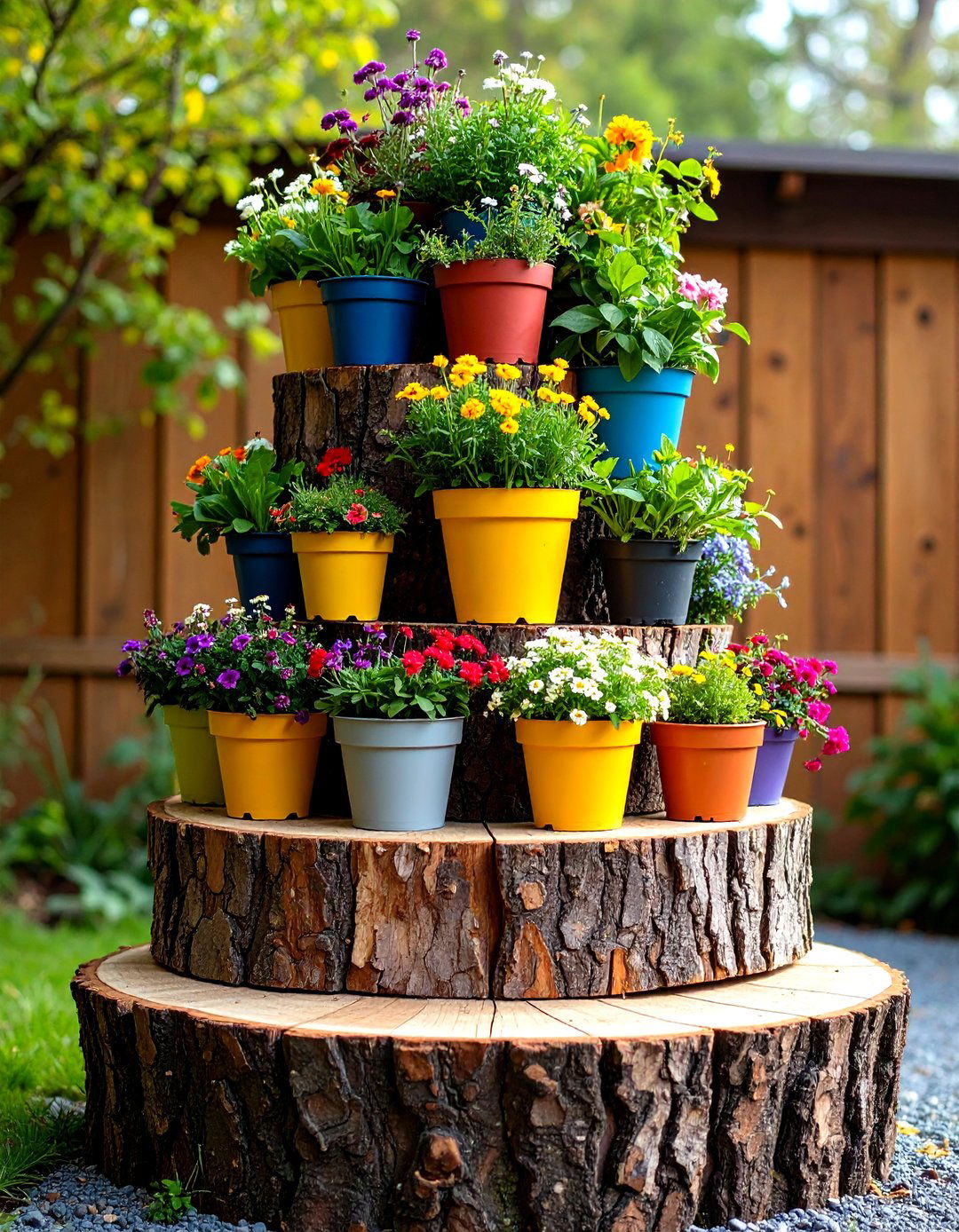
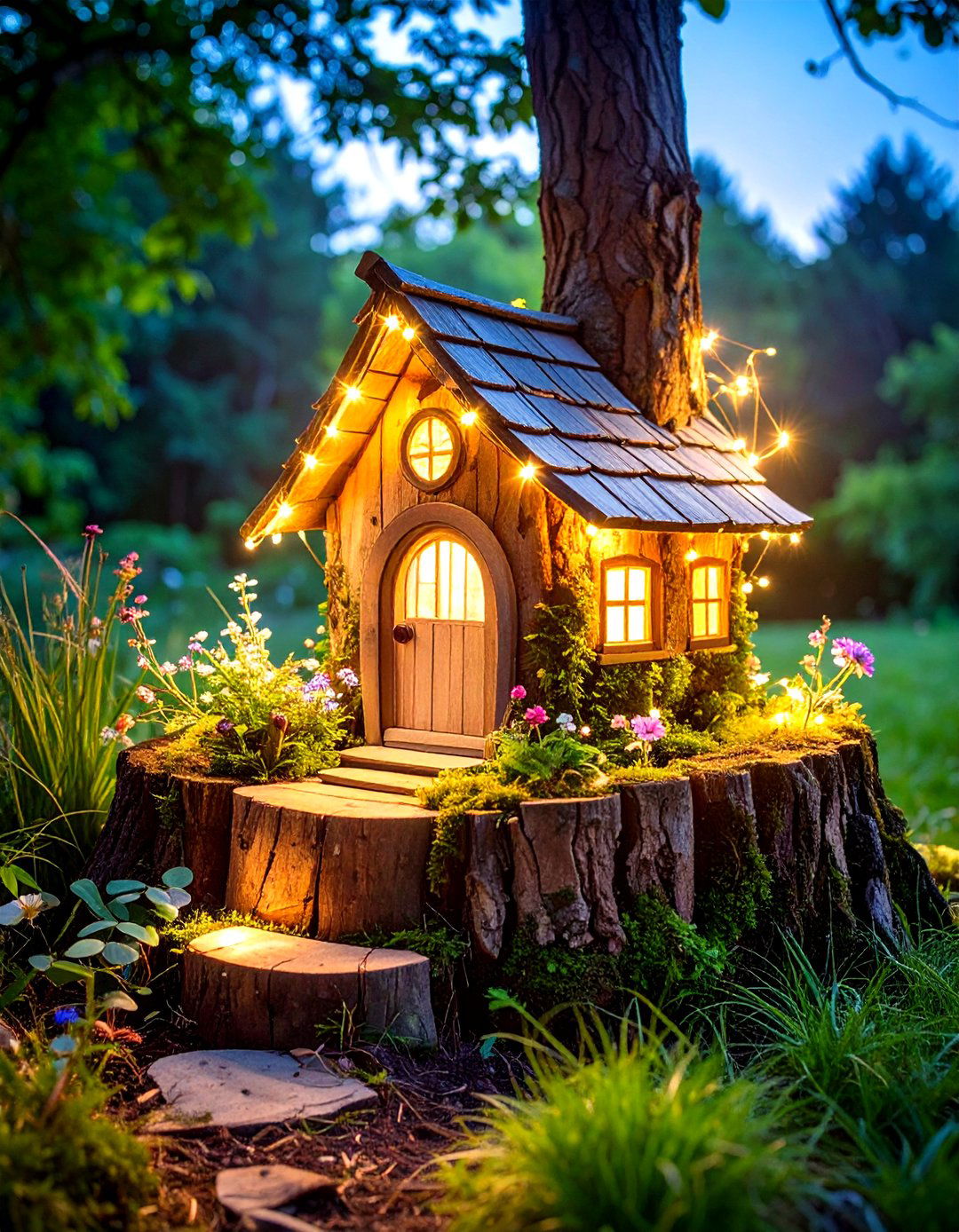
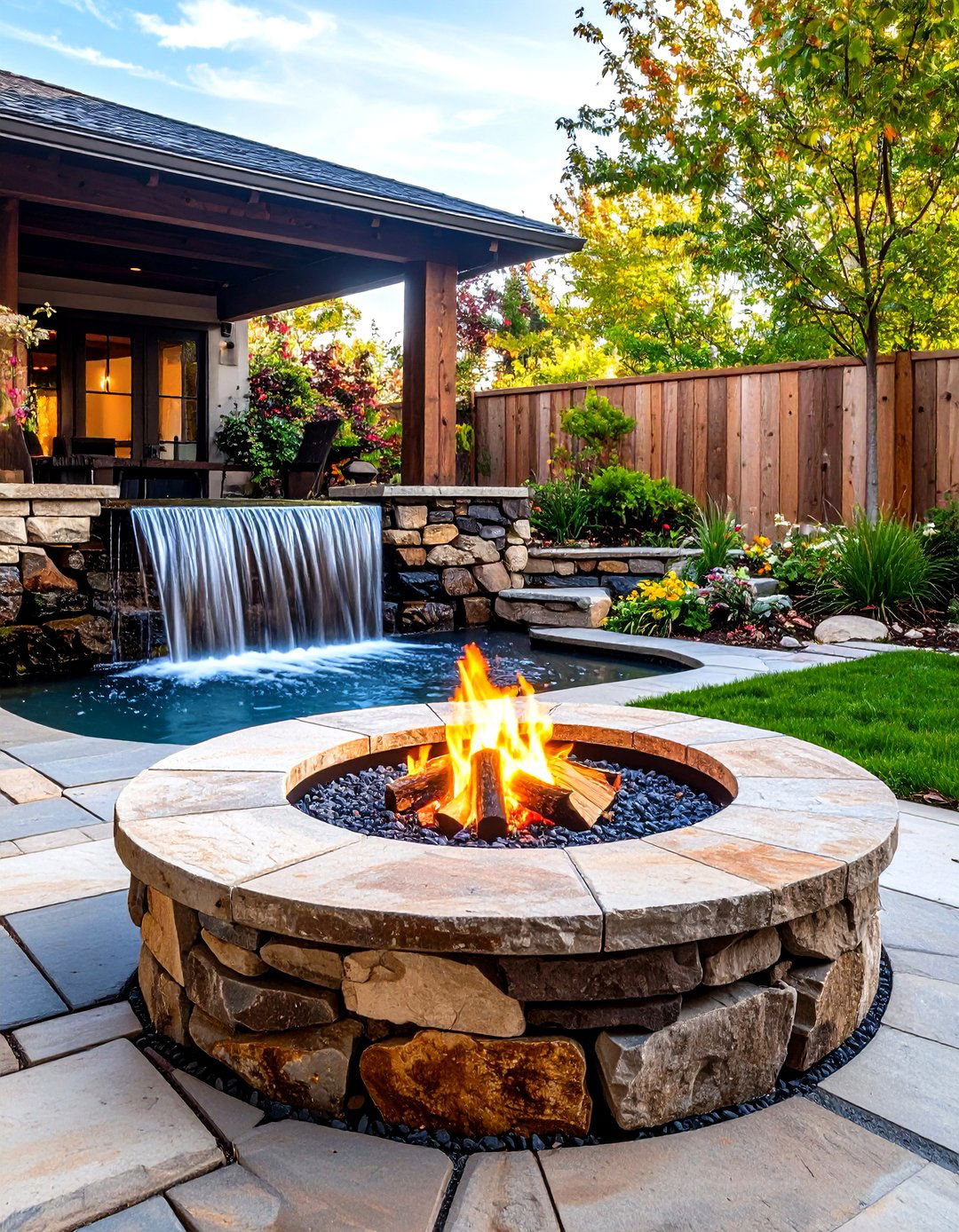

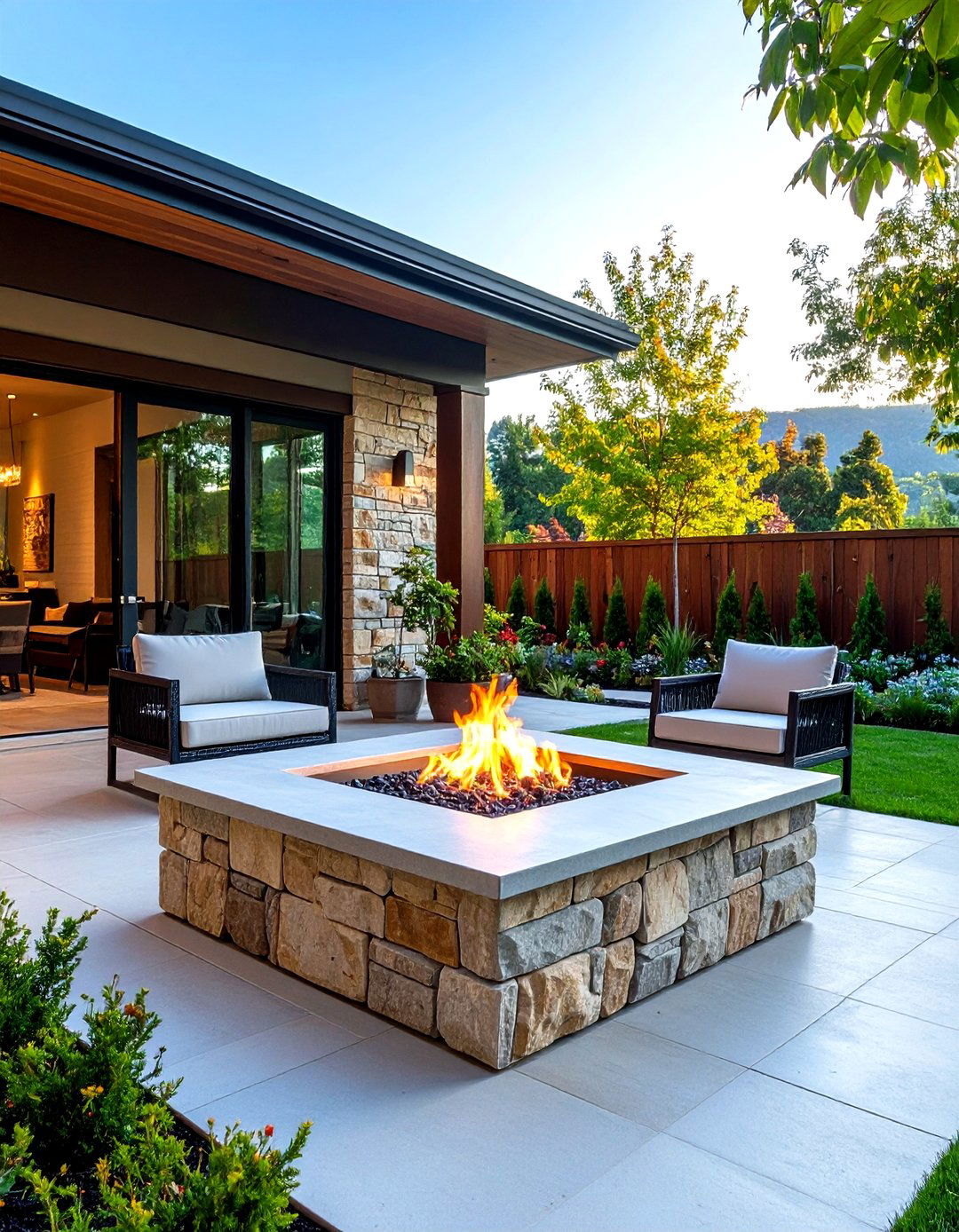


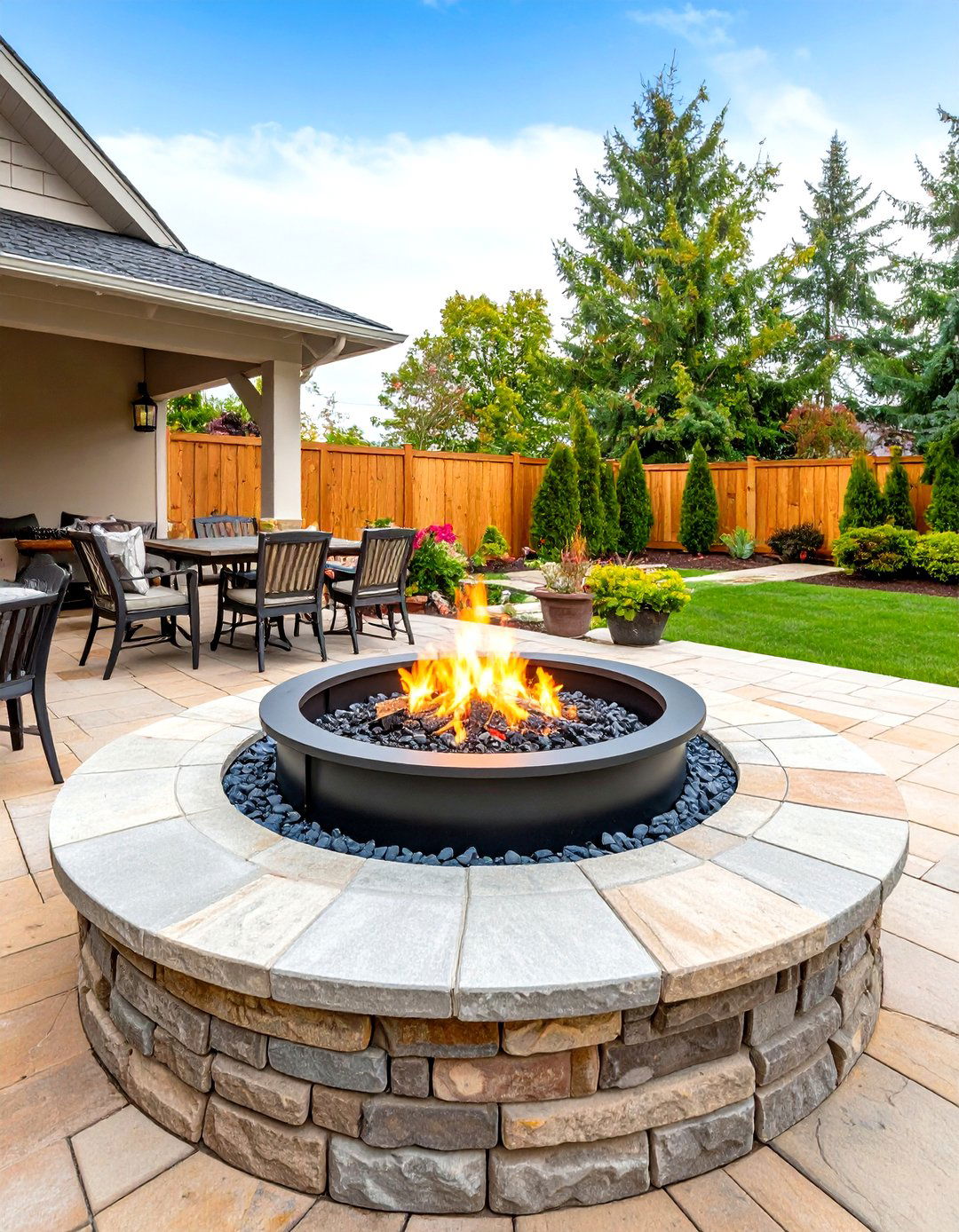

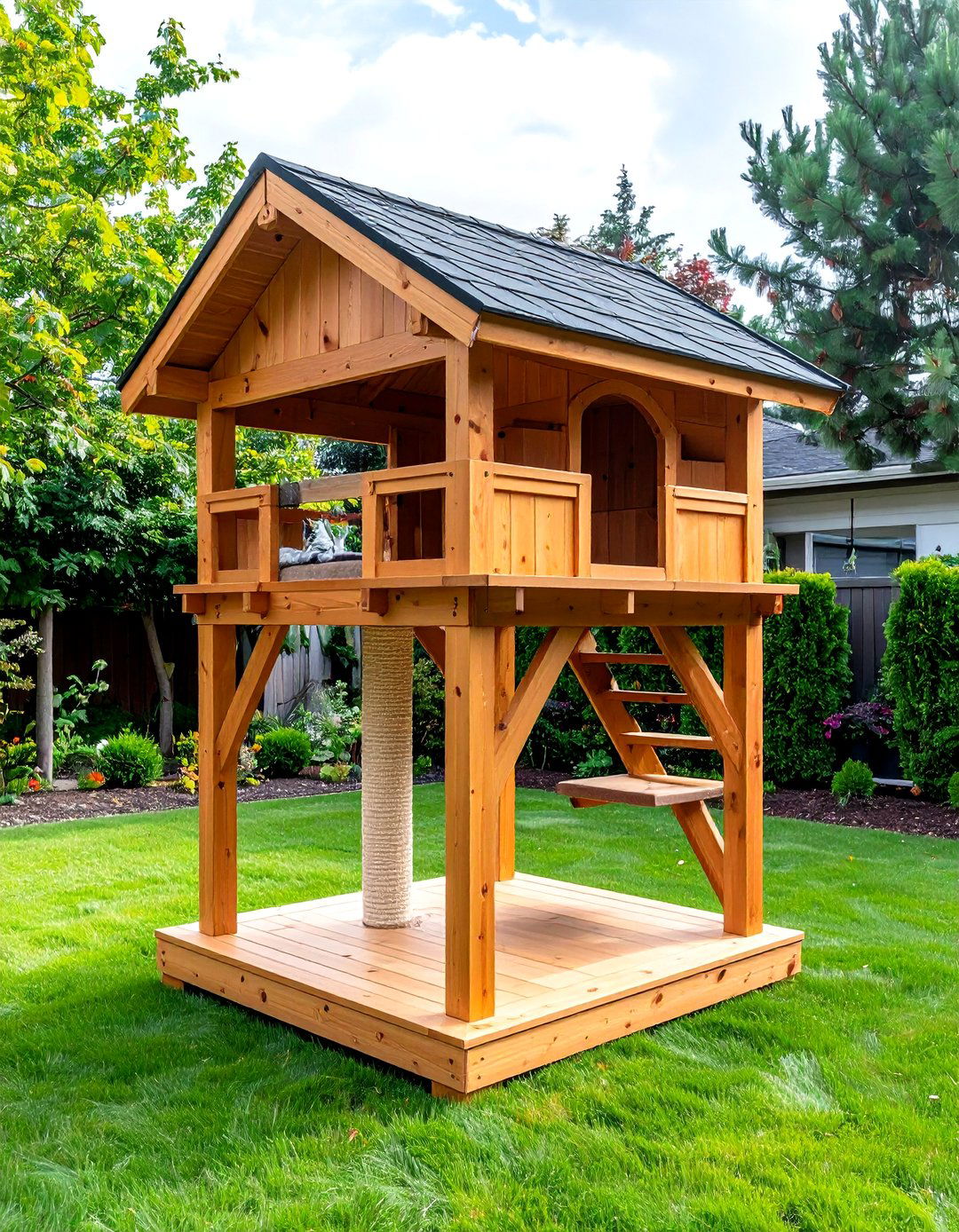
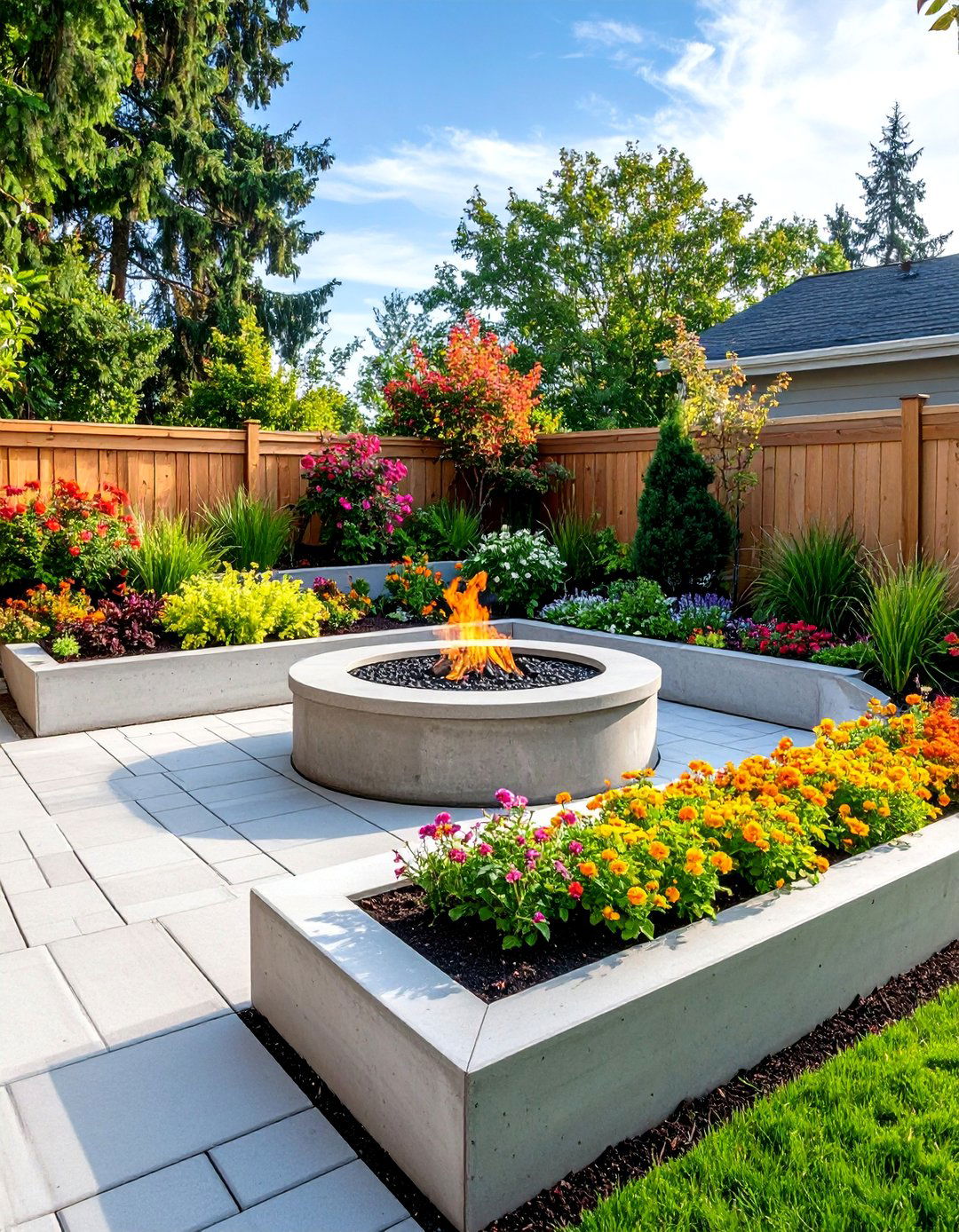
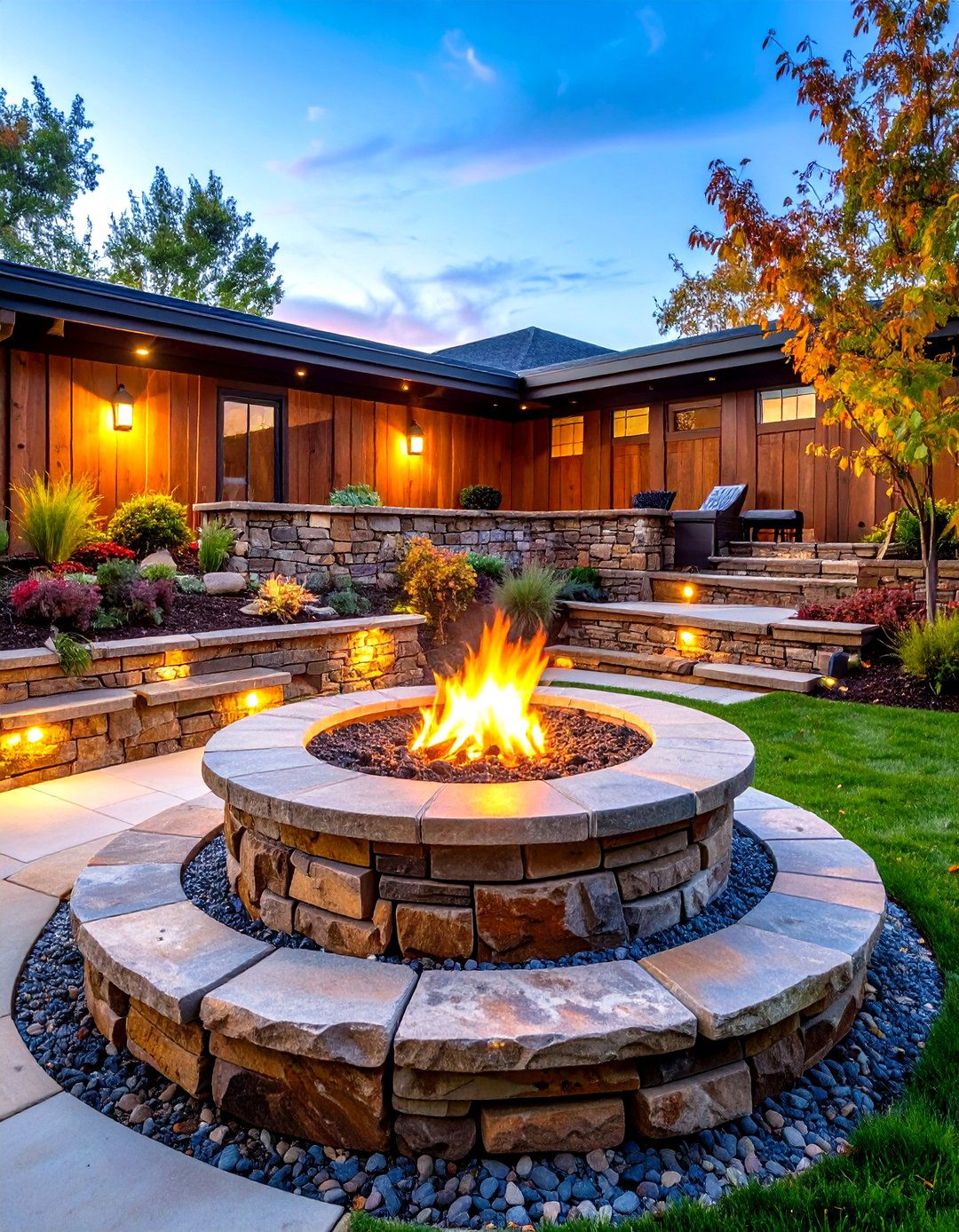

Leave a Reply